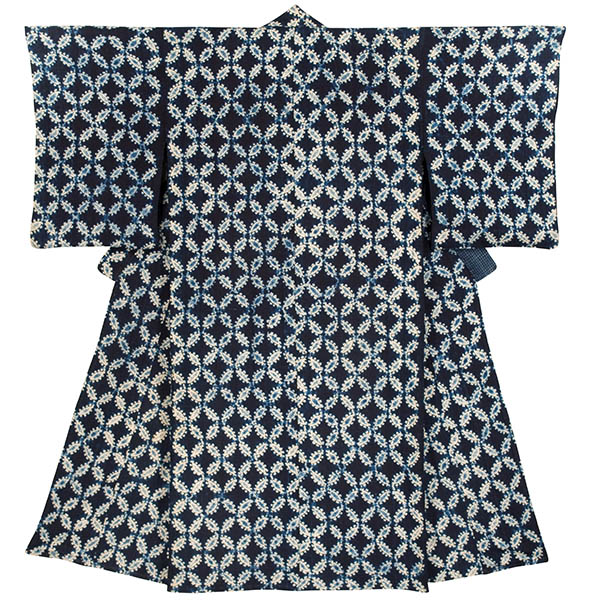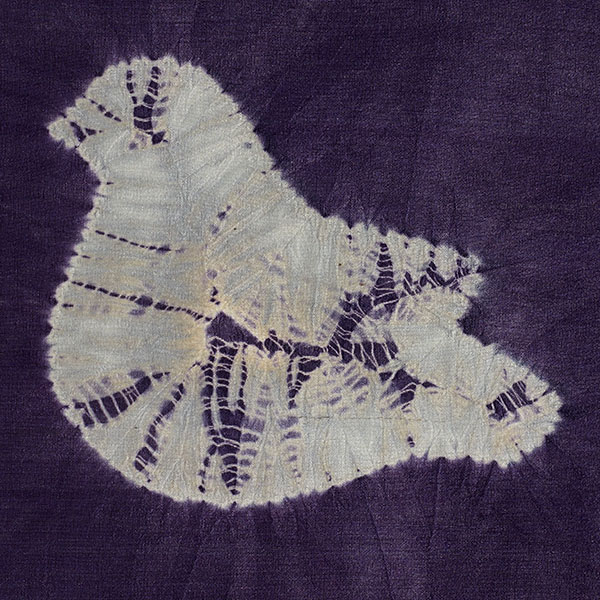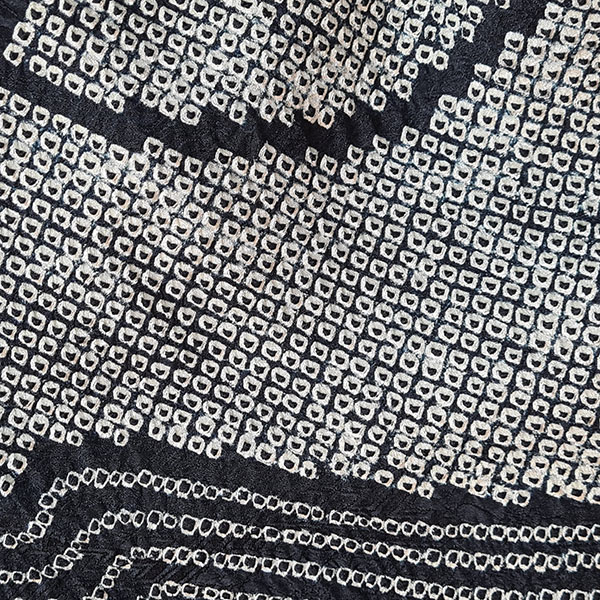Shibori Techniques and Pronunciations
A visual dictionary of techniques. Click on the ‘play’ buttons next to the names to hear the Japanese pronunciations.
For detailed instruction on techniques see Jane’s book ‘Stitched Shibori’. Why not book into her interactive zoom courses ‘Shibori Stream’ – You can read the reviews by students and see her students’ members gallery.

Stitched Shibori
Resists can be created by pulling up the threads of prepared hand stitched fabric. Any number of looks can be achieved and floral, organic, geometric patterns and textures are all within the realms of hand stitching. On a single layer of fabric hira-nui shibori can produce shibori ‘drawings’, designs or linear patterns and can be used to create sugi-nui stripes. Working on folded fabric with hishaki-nui stitching which drifts away from and then back to the fold, differing symmetrical shapes occur to form linear patterns. A more considered approach results in many variations of Hinode, the Sunrise pattern. Compositions can be created with ori-nui shibori which is also traditionally used to create the marvellous Tatewaku pattern of undulating lines.
ADVANCED STITCHED TECHNIQUES
Advanced stitched shibori techniques include a range of miru shibori shapes and the circle is used in various placements for Karamatsu, the Japanese larch pattern. The ori-nui technique is further developed to produce elliptical awase nui shibori and another development which brightens the resist is kamiate shibori. Both approaches can be used for the complex shippō-tsunagi pattern of linked circles. Any number of renditions can bring about exciting new motifs.

Hira-nui shibori
Single rows of stitching look dramatic on dark indigo.

Shishige-nui shibori
Another name for hira-nui shibori.

Mokume shibori
The woodgrain pattern also resembles water.

Kawari mokume shibori
Diamonds and chevrons appear.

Sugi-nui shibori
Controlled stitching brings about stripes.

Ori-nui shibori
A technique to ‘draw’ with or to surround shapes.

Hinode
A repeat pattern evoking sunset and sunrise.

Hishaki-nui shibori
Symmetrical shapes and patterns are created with undulating lines in this technique.

Tatewaku
Varied undulating patterns are used in many cultures.

Awase-nui shibori
Can be used as a broad border or as a much finer stripe.

Awase-nui shibori
The elliptical format is used traditionally for the linked circle pattern.

Kamiate shibori
A brighter resist is given to awase-nui.

Shippo-tsunagi
A linked circle pattern. Image courtesy of John Ruddy.

Miru shibori
Symmetrical motifs can be worked large or small scale.

Karamatsu shibori
Repeated circles create the Japanese Larch pattern.

Maki-nui shibori
This stitch will result in a feathered look resist.

Guntai shibori
Regimented placements created this ‘Military’ shibori.

Maki-age shibori
Shapes have a radiating criss-cross infill pattern.

Shirokage shibori
A technique that brings about a bright, summery look.
Binding
This group of techniques must surely have been the first to appear in many countries. It includes the ever popular bound motif of tie-dye. Resists are creating by binding around a plucked up section of fabric with a fine strong thread. The simplest method would produce the delightful ne maki shibori motif – the tiny thread resisted ring. In Kyoto, a sophisticated method was developed to produce numerous types of tiny dots which can be referred to in general terms as kanoko shibori. In this binding section we also find maki-age shibori, a technique that combines stitching with binding.
Advanced binding techniques
The essence of the technique is carried through to shin eri, binding to a central core such as rope, or a wooden dowel where it can also include boshi methods. Also bomaki shibori.

Ne-maki shibori

Ne-maki shibori
Several, carefully placed.

Kanoko shibori
Techniques were developed in Kyoto for pattern & texture. Closely placed.

Kanoko shibori
Different sized dots are spaciously placed.

Kobōshi

Chubōshi

Kumo shibori

Maki-age shibori
Controlled shapes can be organic, figurative and geometric.
My grateful thanks to the audio team for their contribution to this page


